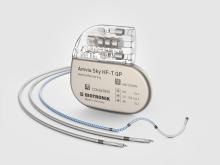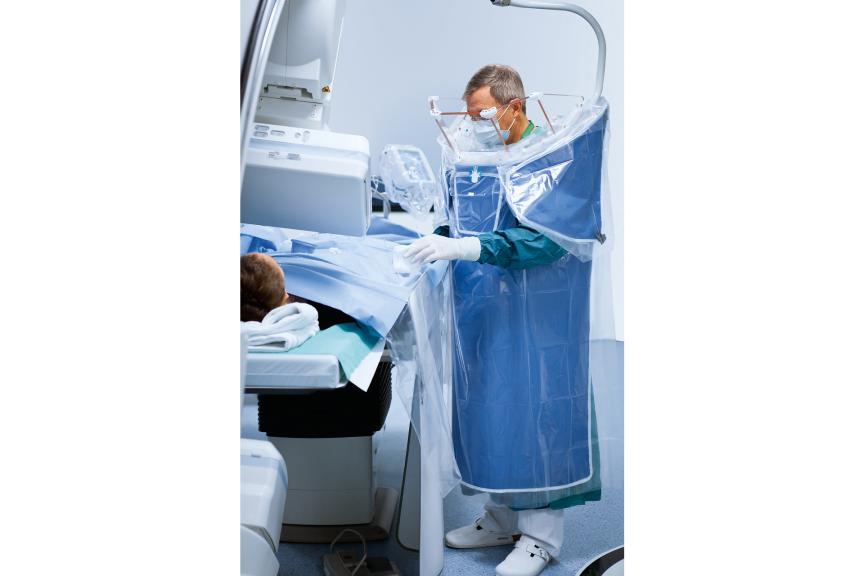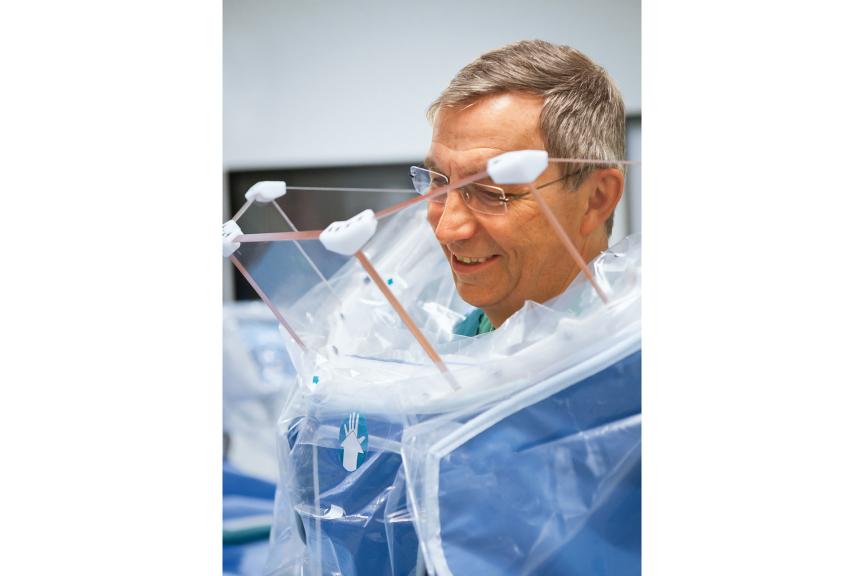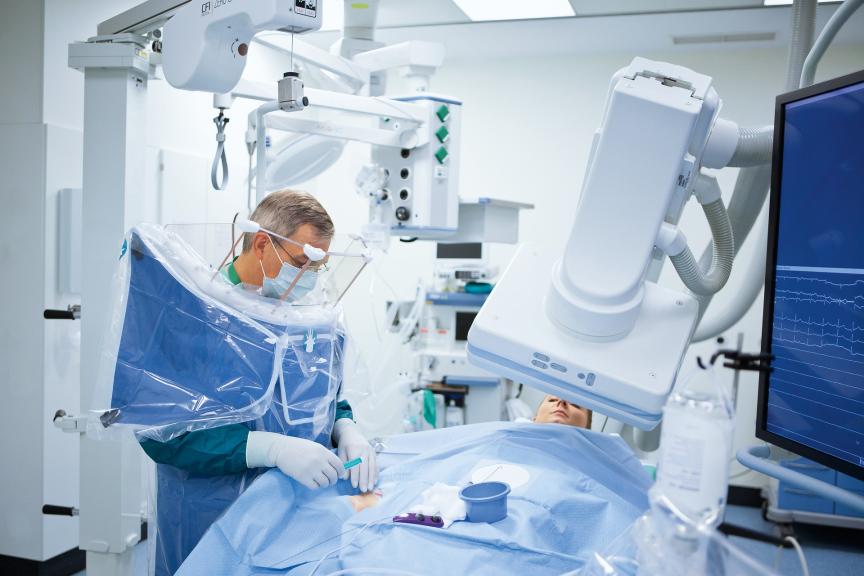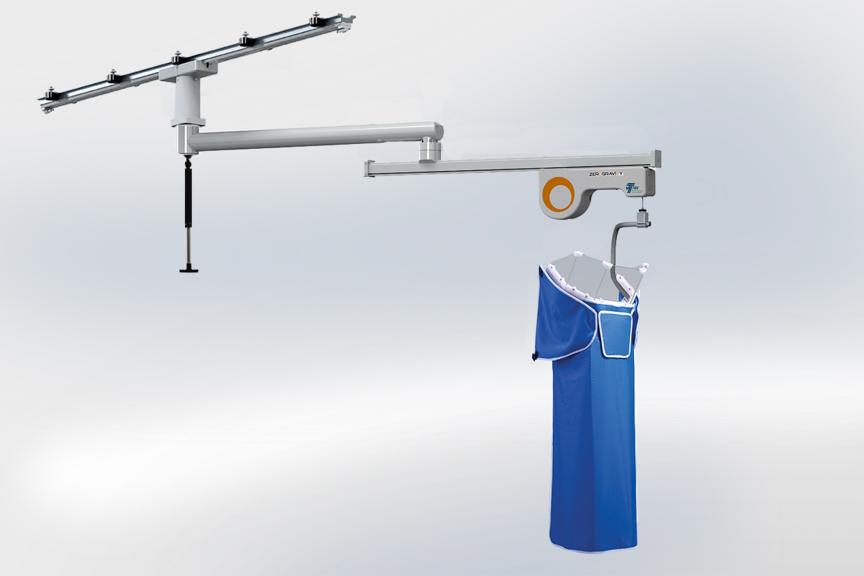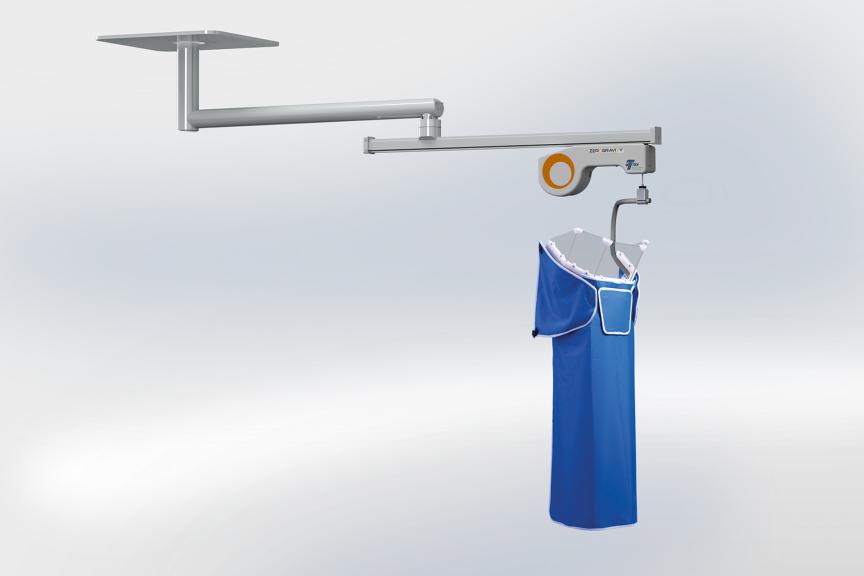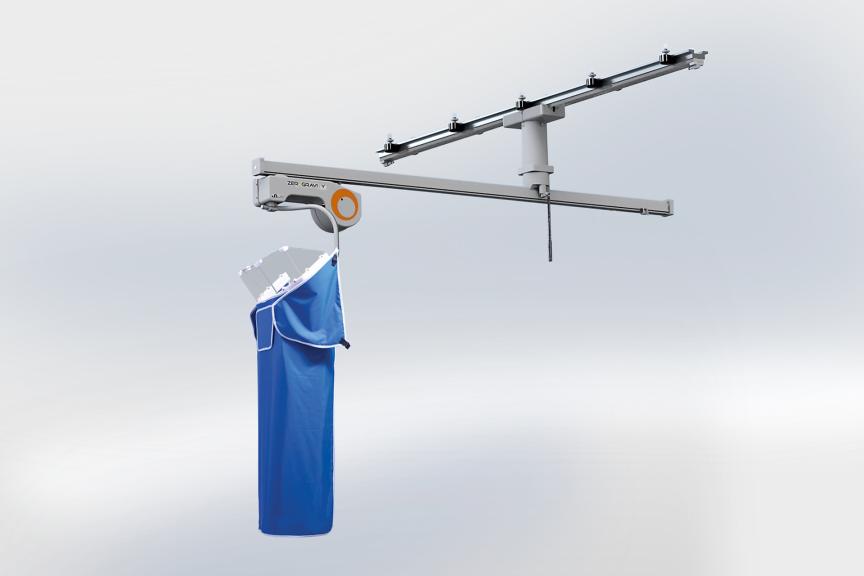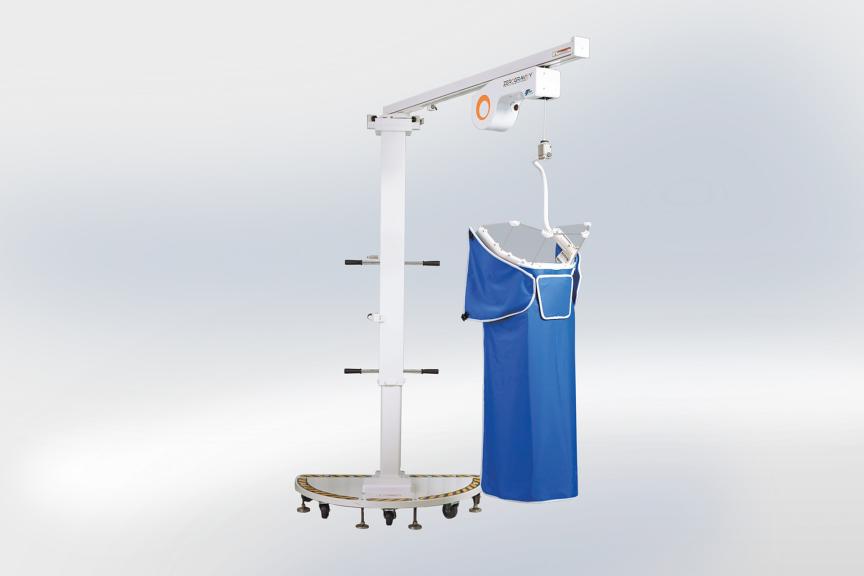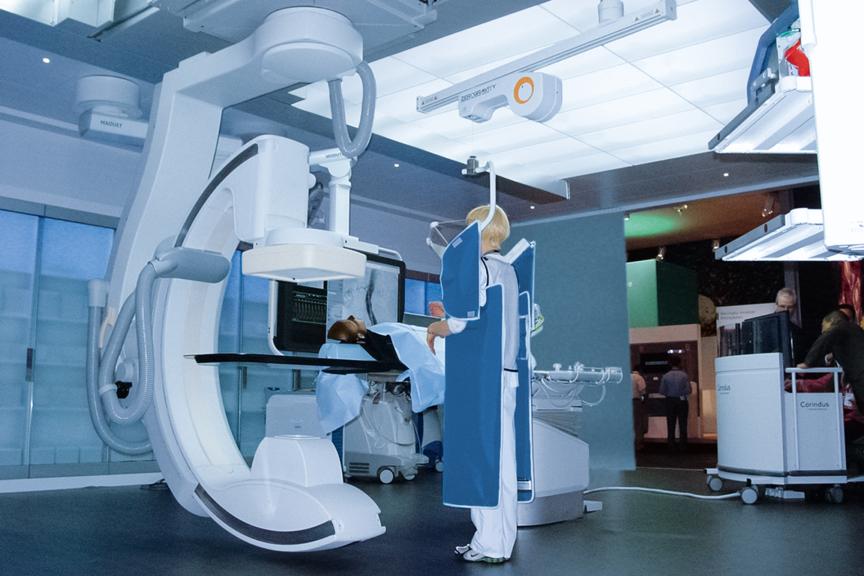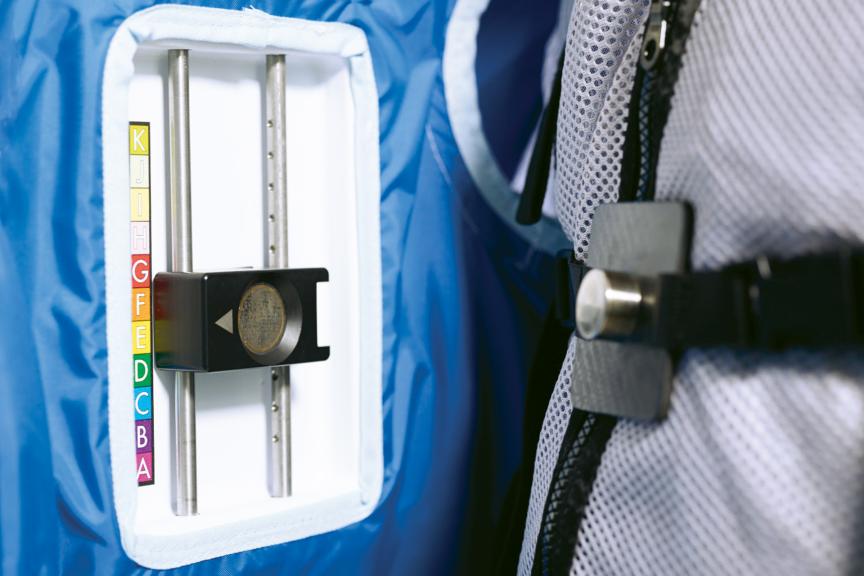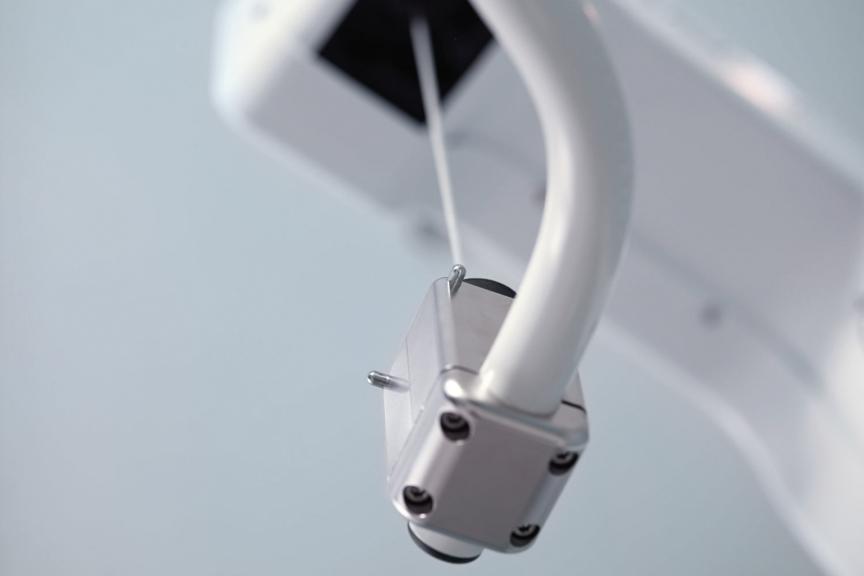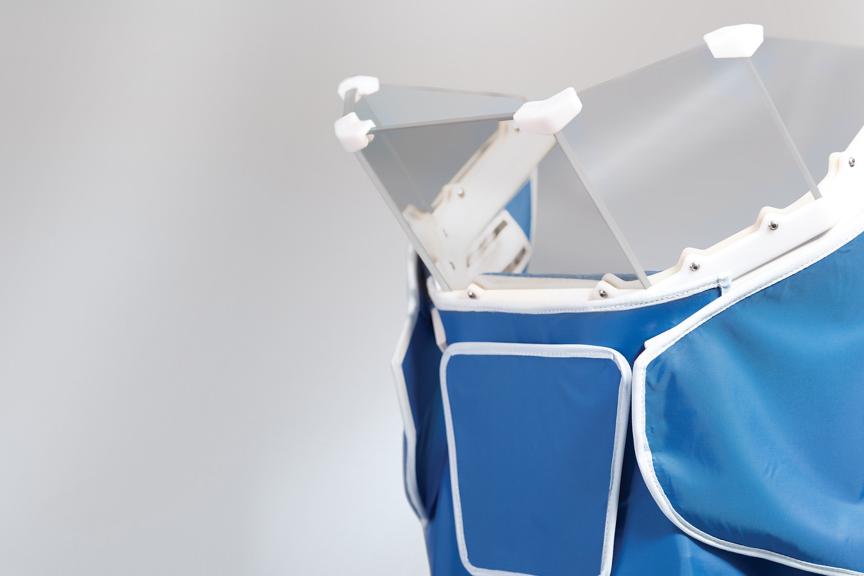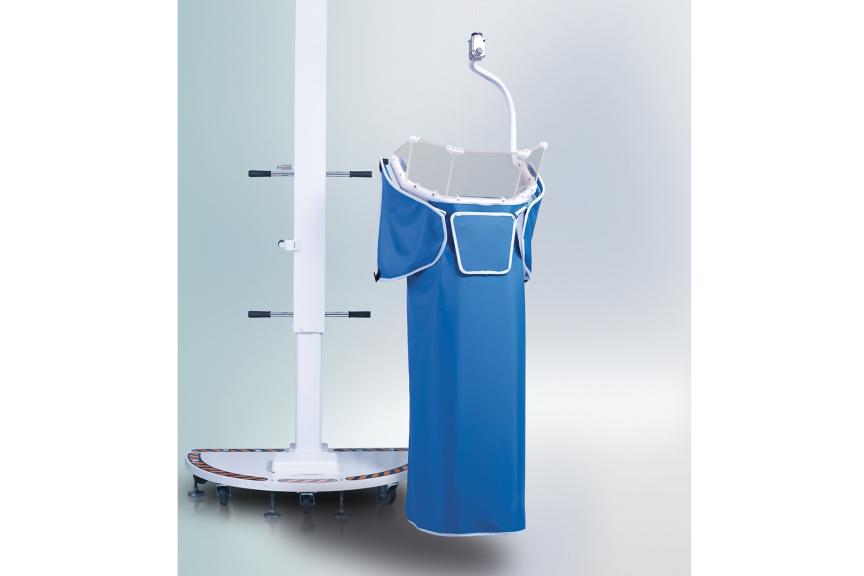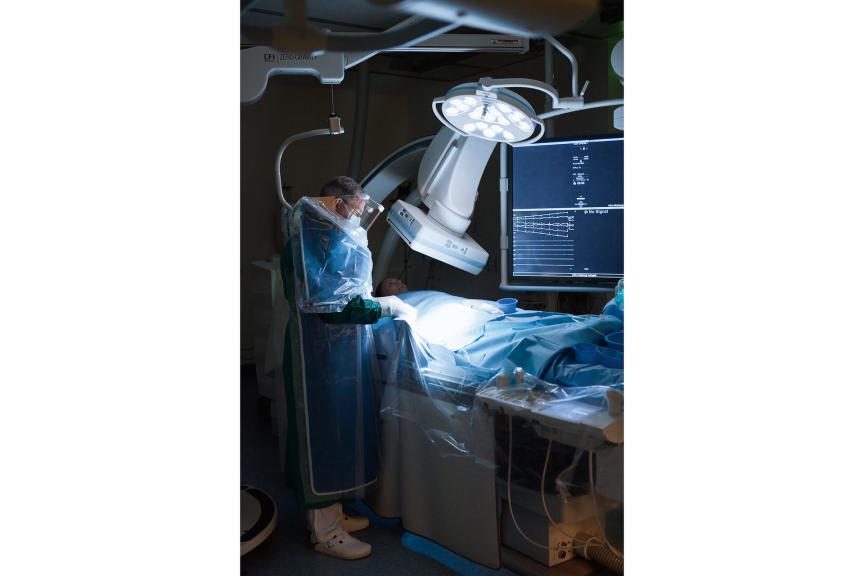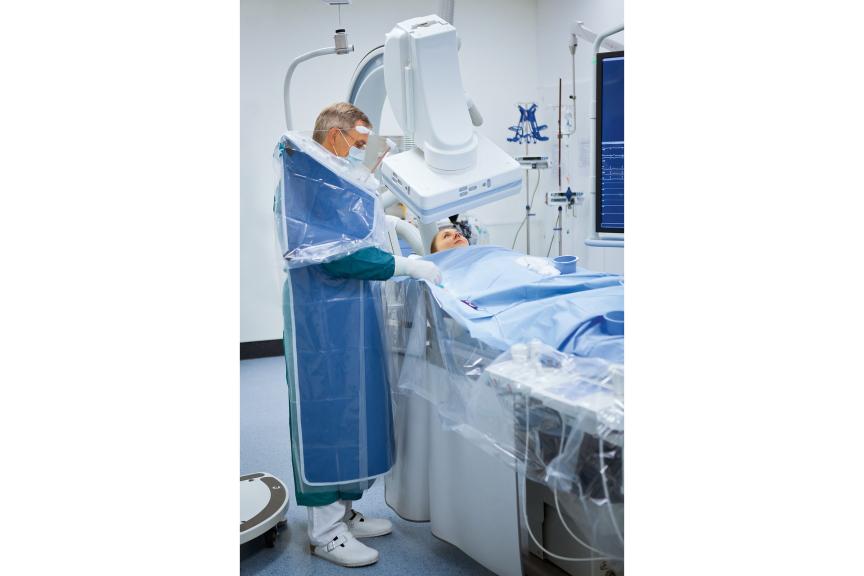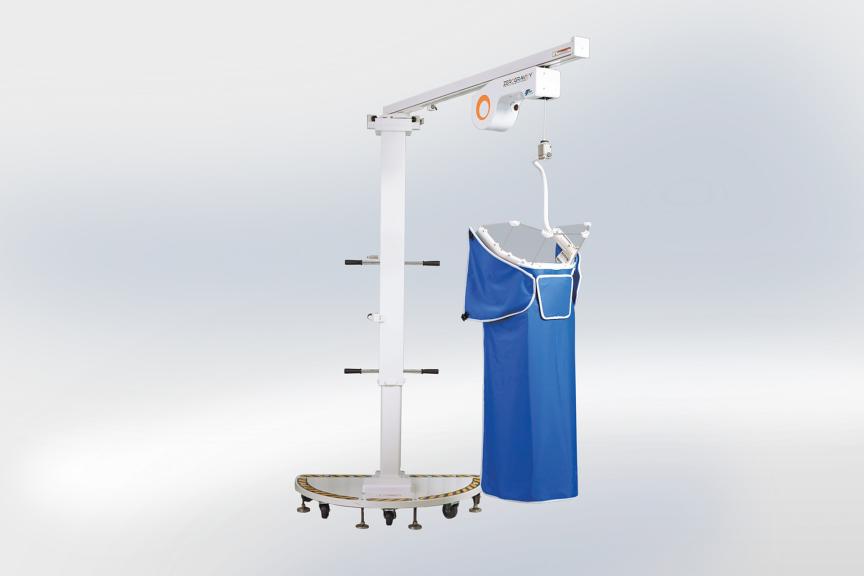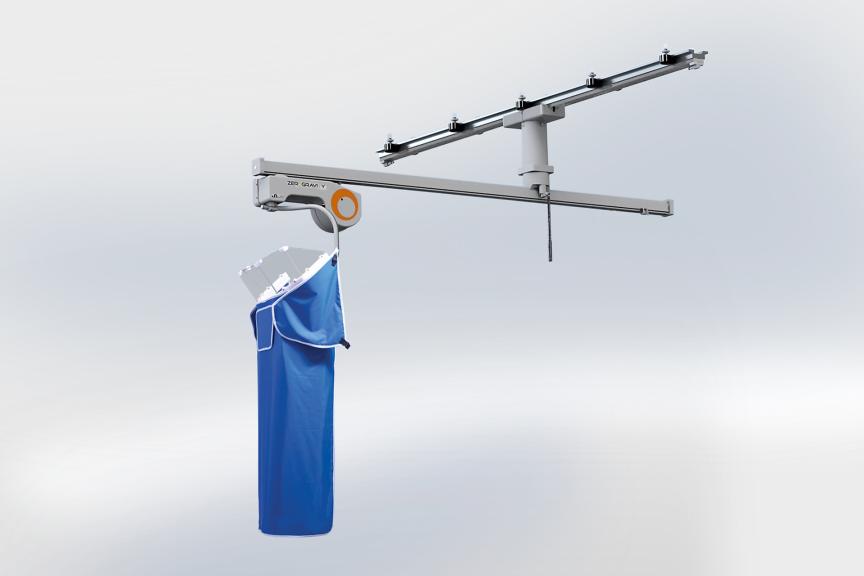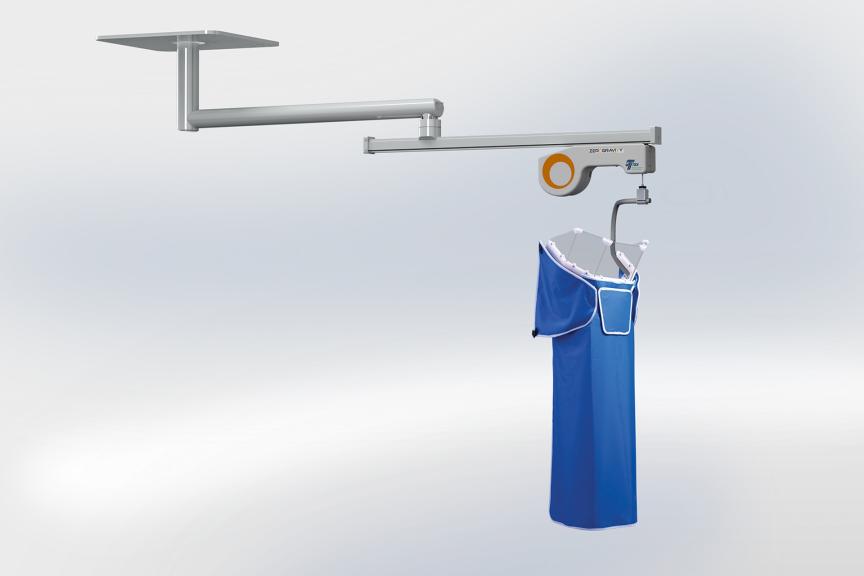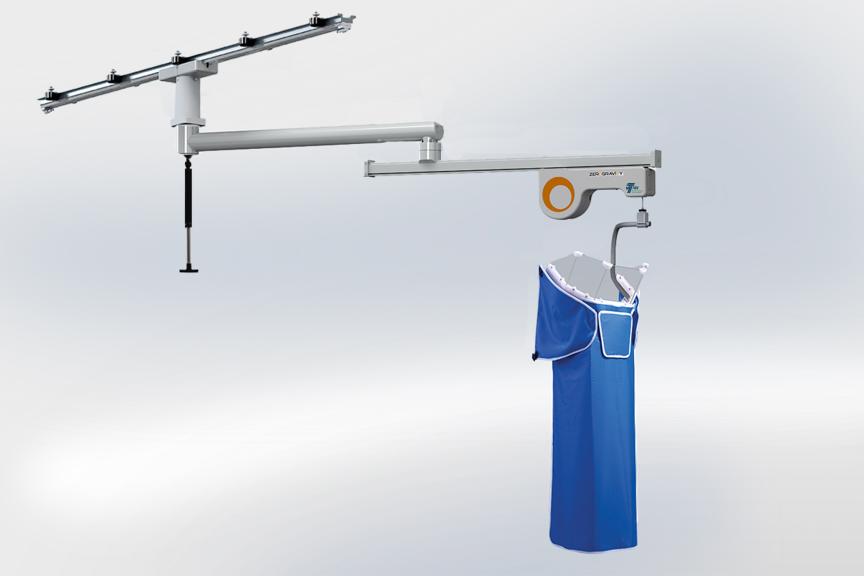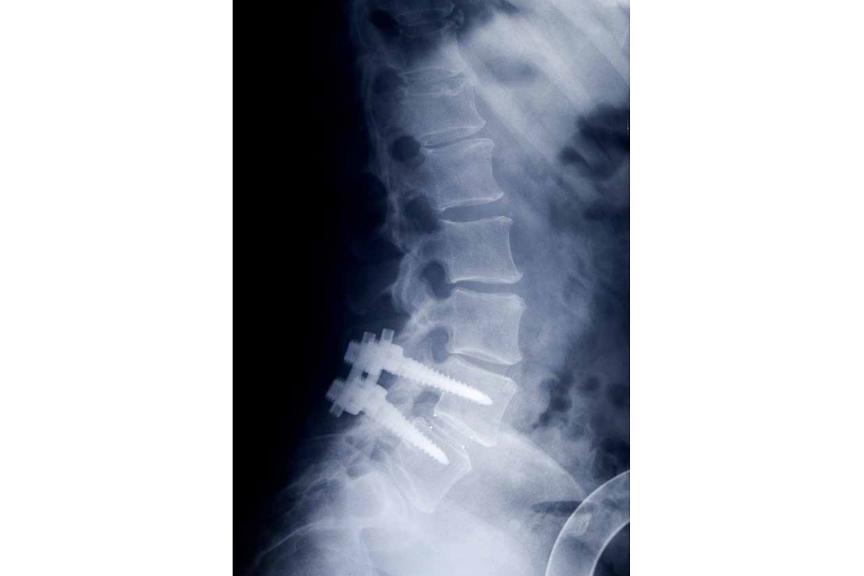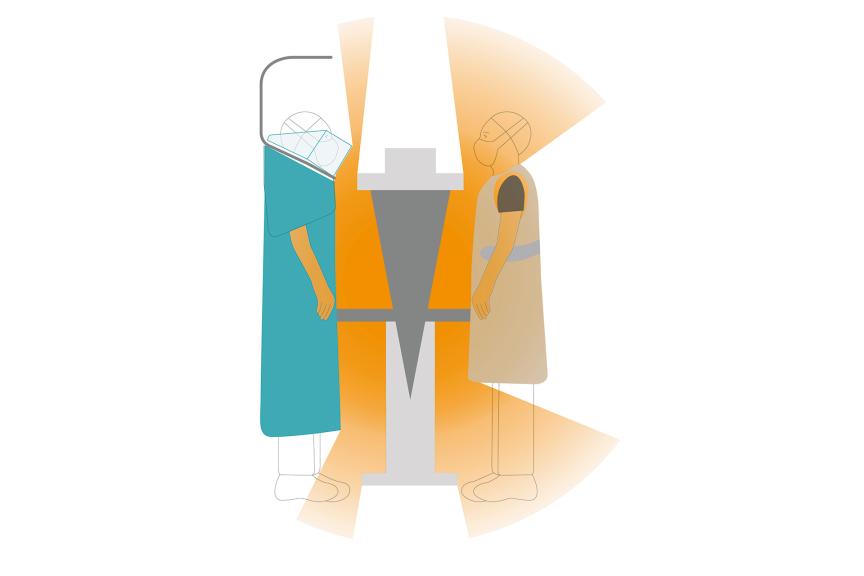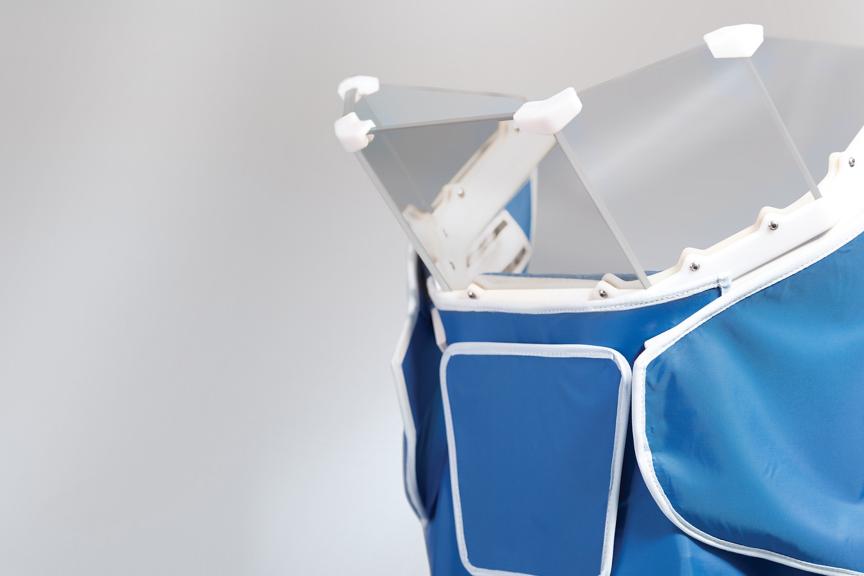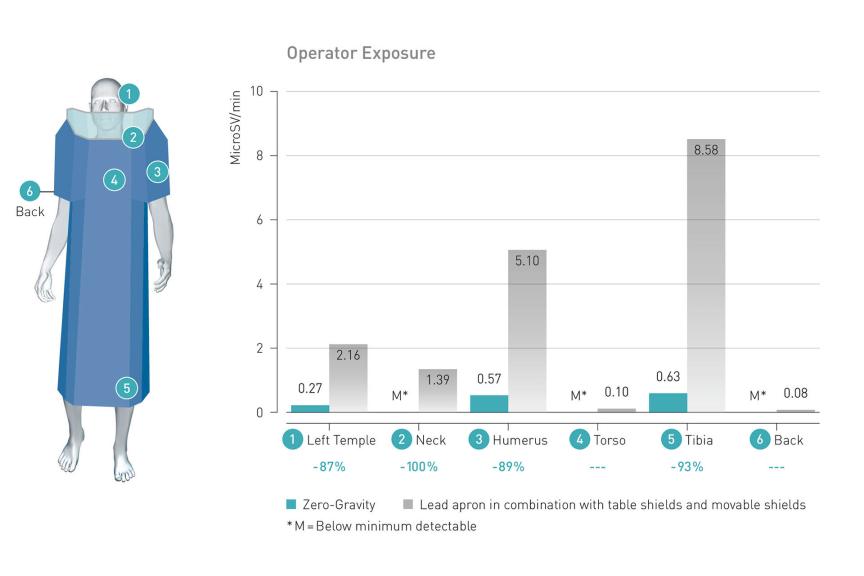Product Details
Floor Unit
The Floor Unit suspended body and face shield can be repositioned for a broad range of procedures and room configurations.
When not in use, the system can be easily stored to the side of a room.
Monorail
Suspended from a ceiling-mounted rail, the Monorail is perfect when floor space is scarce.
Offered in two boom arm lengths: the short boom provides patient access on one side of the table, while the longer boom provides access on both sides of the table (depending on the position of the rail).
Can be upgraded with an additional shield, enabling simultaneous use by two operators.
Hinged Swing Arm
The single fixation point of the Hinged Swing Arm system makes it the ideal choice when other ceiling mounted equipment prohibits the use of a rail.
Can be used on both sides of the table if there is a fixation point available near the center of the table.
The shield can be stowed when not been used, e.g., in hybrid rooms.
